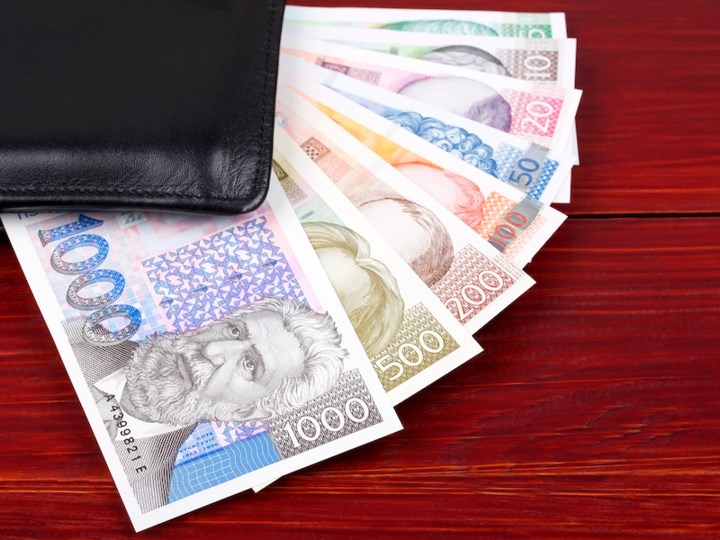This article was written before January 1st, 2023, when the Croatian currency, the kuna, gave way to the euro. You can since January 1st, 2023. pay with euros in Croatia, but the history of the Croatian kuna is no less interesting.
If you have booked your vacation in one of our
villas with pool in Croatia and you try to find out more about the
country and its people, then it would be good if you also know a little more about the
local currency.
In Croatia people have been paying with the
Croatian Kuna since May 30, 1994. You will see price tags here with “
HRK” or “
kn” after the amount. One
Kuna (Croatian for marten) is equal to 100
Lipa (Croatian for linden).
In the Middle Ages, marten fur was used for
trading and paying taxes in Istria, Kvarner and Slavonia. Hence the name Kuna. The introduction of the Euro in Croatia is expected in 2023 at the earliest. Until then you will have to pay with the Kuna. One Euro is about 7.5 Kuna.
The
coins feature typical plants and animals and the
notes important personalities and monuments. You will certainly recognise some of the buildings and monuments during your vacation.
Let us first dedicate ourselves to the notes, of which we would always like to have
a few more in our wallet. ;-)

The
10 kuna banknote shows the
amphitheater, the symbol of the city, which you cannot miss when visiting
Pula. Below is
Motovun, a beautiful medieval town in the
heart of Istria. The front of the banknote shows
Juraj Dobrila, who among other things, contributed to the introduction of the Slavic language in schools, as
bishop of Porec-Pula from 1857 and financed the education of children.
On the
20 kuna banknote you can see the
castle of the Counts of Eltz in Vukovar, where the city museum is located today, and on the other side the likeness of
general Ban Josip Jelacic, who is considered a Croatian national hero.
The
50 kuna banknote adorns the
city walls and fascinating old town of Dubrovnik. Ivan Gundulic, the
most important writer of the Baroque era, was born in Dubrovnik in 1589.

With the
100 kuna banknote you are holding the
St. Vitus Cathedral in Rijeka and
Ivan Mazuranic in your hands. The church is dedicated to the patron saint and protector of the city. The
writer and politician Ivan Mazuranic was one of the most important figures of the Croatian national movement in the 19th century.
If you pay with the banknote worth 200 kuna, you can admire the former command building in Osijek, which today houses the rectorate of the university, and meet Stjepan Radic, a politician and writer who founded the Croatian Peasant Party in 1904.
The
500 kuna banknote presents us the imposing
Diocletian's Palace in Split, the monument of Roman architecture and the old age residence of the Roman emperor Diocletian.
Marko Marulic, who was born in Split in 1450, was an important
poet and humanist and can be seen on the other side.
The
1000 Kuna banknote shows the equestrian statue of
King Tomislav, who is considered the first Croatian king and who
mysteriously disappeared in 928, as well as the
cathedral in Zagreb. The reverse is taken by
Ante Starcevic, often referred to as the “father of the homeland”, who at that time already challenged the Yugoslav idea for the nation state of Croatia.
The
Lipa coins of the Croatian national currency show
corn on the cob (1 Lipa), a
grapevine (2 Lipa), the
tobacco plant (10 Lipa) and the
olive branch (20 Lipa), which are particularly important in agriculture. The
pedunculate oak (5 lipa) is particularly characteristic of the interior of Croatia. On the 50 Lipa coin we see the
Degenia velebitica, the protected and rarest plant in Croatia, at the same time the symbol of the Velebit Mountains and Croatia.

The
kuna coins show the
nightingale (1kn),
bluefin tuna (2kn) and the
brown bear (5kn). These animal species are considered
endangered in Croatia and are under species protection. The
25kn coin with the
marten - from which the name of the currency comes - is no longer in circulation as a means of payment, but is
highly valued by numismatists.
We hope that with this short detour we have brought you closer to
Croatia's national currency. If you have booked a villa with pool in Croatia, the next time you
go shopping or pay the bill in the restaurant, you may see the coins and bills in your hand with different eyes. In any case,
you will know more about it…
Daniela Vuleta
31.1.2022

 MY ISTRIA GUIDE
MY ISTRIA GUIDE



